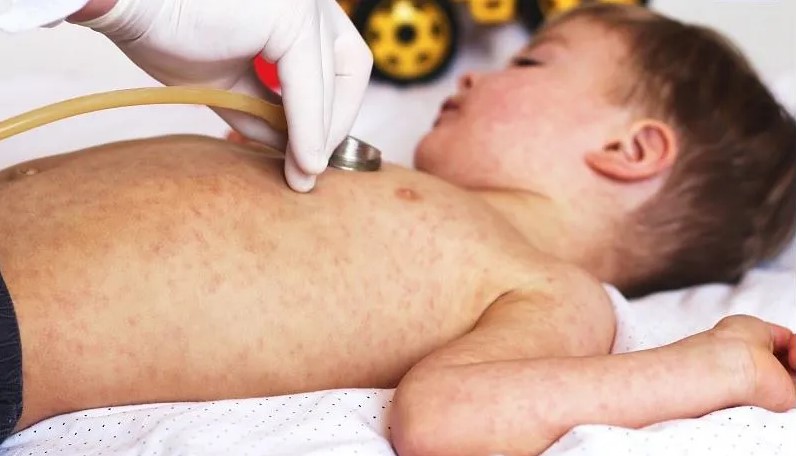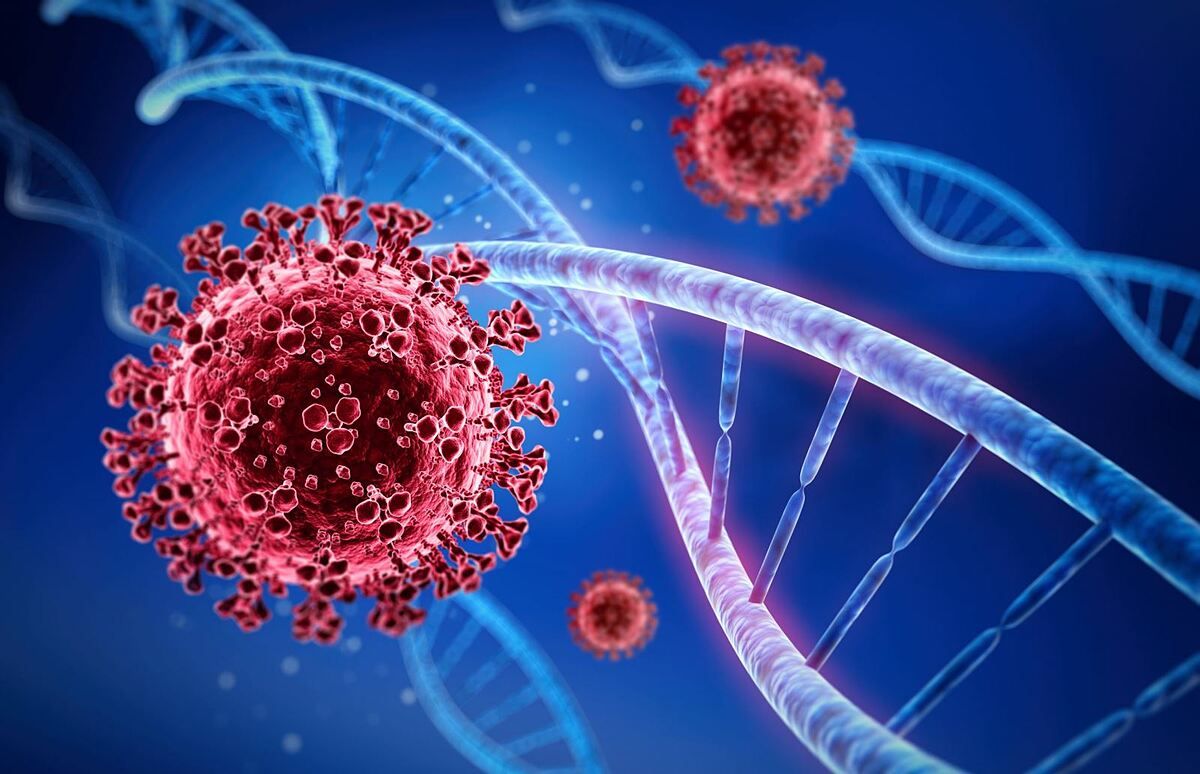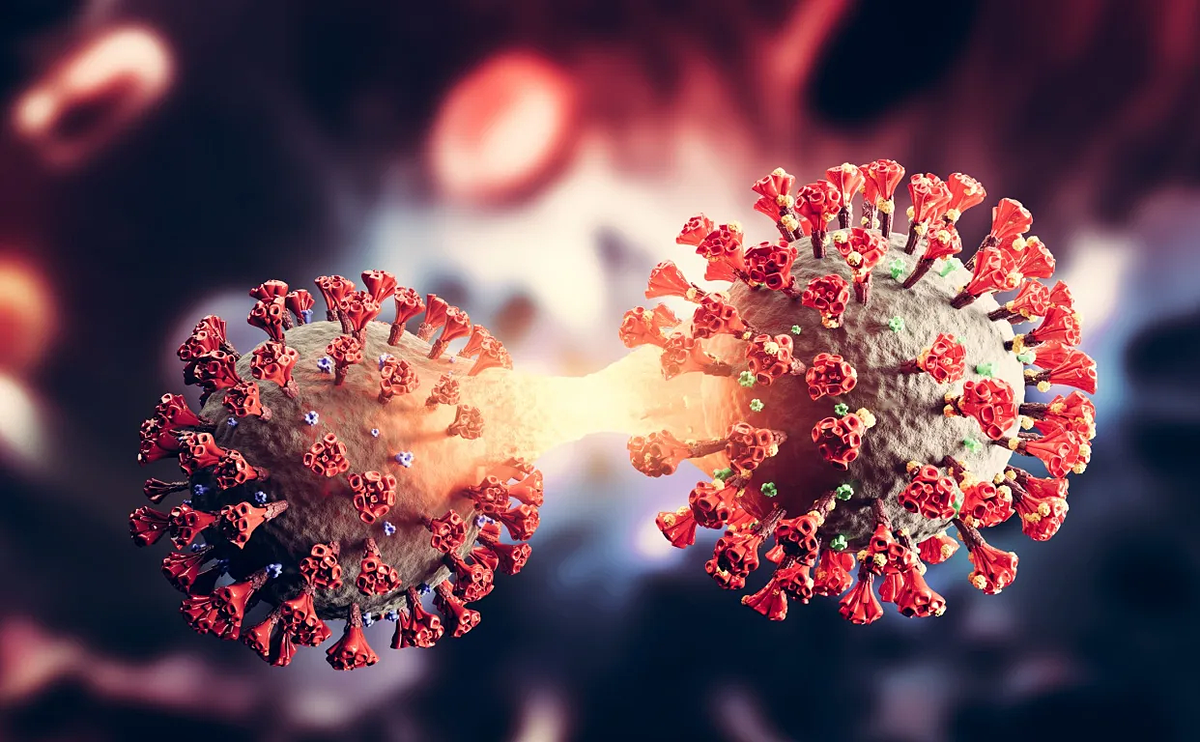Rubella: Causes, symptoms, transmission, treatment and prevention
- Rubella is an infectious disease caused by the Rubella virus. The disease is mostly mild. However, if pregnant women get Rubella, it will cause dangerous complications for the fetus such as birth defects, stillbirth or miscarriage.
1. Causes of Rubella
The disease is caused by Rubella virus, belonging to the Togaviridae family. To date, only one serotype of Rubella virus has been discovered and humans are the only reservoir of this virus strain. Thus, people suffering from Rubella are the only source of infection.
Rubella virus is inactivated by high temperatures and common antiseptic solutions. Depending on air temperature and humidity, the virus can survive in a pathogenic state in the environment for several hours. Crowded areas such as schools, hospitals, factories... are the most common environments for disease transmission.
When entering the body, Rubella virus multiplies in respiratory cells, spreads to lymph nodes and then into the blood. Vaccination against rubella can create durable immunity and lifelong protection.

2. Symptoms of Rubella disease
After the virus enters the body for 2-3 weeks, the patient is completely normal. Next, there are 3 main symptoms: fever, rash and lymphadenopathy.
- Patients with fever: Headache and fatigue usually appear 1-4 days, after the rash appears, the fever decreases. Mild fever of 38.5 degrees Celsius.
- Swollen lymph nodes: In the occipital bone, elbow, groin, neck, slightly painful to touch. The lymph nodes often appear before the rash, remaining for a few days after the rash disappears.
- Rash: is a sign that makes people pay attention. The rash first appears on the head and face, then spreads all over the body, often not sequentially like measles. The rash is round or oval, about 1-2mm in diameter. The spots can form into patches or stand alone. Within 24 hours the rash appears all over the body and disappears after only 2-3 days. Need to distinguish from the rash of measles: The measles rash is smooth to the touch, grows sequentially from the head, face down, after flying leaves scales like talcum powder, and dark stripes on the skin.
- Joint pain or pain all over the body, common in women. The joints of the fingers, wrists, knees, and ankles hurt during the rash, but there are no sequelae afterward.
Clinical forms of Rubella
- Congenital Rubella: Virus passes from mother's blood through the placenta. Newborns have rashes at birth, or within 48 hours of birth. The patient has an enlarged liver, spleen, and jaundice.
- Hemorrhagic form due to thrombocytopenia: Accounts for 1/3,000 cases. Bleeding appears 1-2 weeks after the rash appears. There may be nosebleeds, gastrointestinal bleeding, and newborn babies may have umbilical bleeding.
- Pregnant women with Rubella: Usually the mother has no symptoms, the most worrying thing is the malformations of the fetus in the womb. In the first 3 months: 70%-100% of babies are born with congenital rubella and 25% of babies have birth defects in the heart, eyes, and brain.
After 3 months: If the mother is 13-16 weeks pregnant, the child will have congenital Rubella at a rate of 17%. At 17-20 weeks of pregnancy, the rate is 5%. And when the pregnancy is more than 20 weeks, that rate is 0%.

Complications of fetal malformations: When mothers in the first 3 months of pregnancy have Rubella, they are susceptible to miscarriage or stillbirth in the uterus; If the fetus is born, the fetus will be underweight, grow slowly, have teething delays, and be accompanied by birth defects such as cataracts (one or both sides); Corneal opacification, patent ductus arteriosus, pulmonary artery stenosis; Children may become mute, deaf, or mentally retarded.
3. Is rubella contagious?
Rubella is an infectious disease caused by a virus. The disease is transmitted from person to person through the respiratory tract or from mother to child. Rubella virus is often found in the upper respiratory tract of infected people, especially the nose and throat. Direct contact with mucus from the nose, throat or coughs and sneezes of an infected person can cause the virus to spread from one person to another.
The disease is transmitted from person to person, from infected people, virus carriers to healthy people during the period from 7 days before the rash appears to 7 days after the rash appears.
4. Prevent Rubella
As an infectious disease, disease prevention is mainly personal hygiene, frequent hand washing with soap, after contact with patients, family members, caregivers, and patient treatment, cleaning with disinfectants is necessary. antiseptic solution.
Isolate and limit contact with people who are sick or suspected of being sick. In case of contact with sick people, it is necessary to wear a mask and necessary protective equipment. Especially pregnant women should not come into contact with people infected with Rubella. Avoid large gatherings, especially in places with high risk of infection. outbreak.
Do not share personal items such as toothbrushes, towels, or other items that may be contaminated with nasopharyngeal secretions...
Vaccination is the most effective way to prevent disease and can create lifelong immunity. For women, if they cannot afford to get vaccinated early, it is best to get vaccinated against Rubella before planning to get pregnant. The best time to get vaccinated is at least 3 months before planning to get pregnant.
5. How to treat Rubella
There is currently no specific treatment for Rubella and congenital Rubella syndrome. Treatment is generally just symptomatic treatment such as:
- Treatment of fever.
- Treatment of headaches.
- Replenish water, electrolytes and improve physical condition.
- Antibiotics should not be used if there is no superinfection.
- Treatment of complications (if any).
- Treatment of joint pain, if there is severe joint pain.
- Treatment of encephalitis and meningitis: This is the most serious complication, so it must be monitored, detected and treated promptly.
In fact, Rubella usually has mild symptoms so it does not require special care and treatment, but can be treated at home or at medical facilities. For children with high fever, doctors reduce the child's fever with measures such as drinking lots of water, using antipyretics only when absolutely necessary, and it is best not to use aspirin. Do not use antibiotics when there is no superinfection.
Rubella patients need a combination of rest and a nutritious diet. Maintain clean personal hygiene, pay attention to oral care and hygiene, hands and body. When showing signs of illness, patients should go to the hospital early for diagnosis and treatment, and quarantine when necessary to limit the spread to surrounding relatives.









 Facebook
Facebook
 Tweet
Tweet
 Zalo
Zalo







 News
News

















 Sign in with Facebook
Sign in with Facebook
 Sign in with Google
Sign in with Google